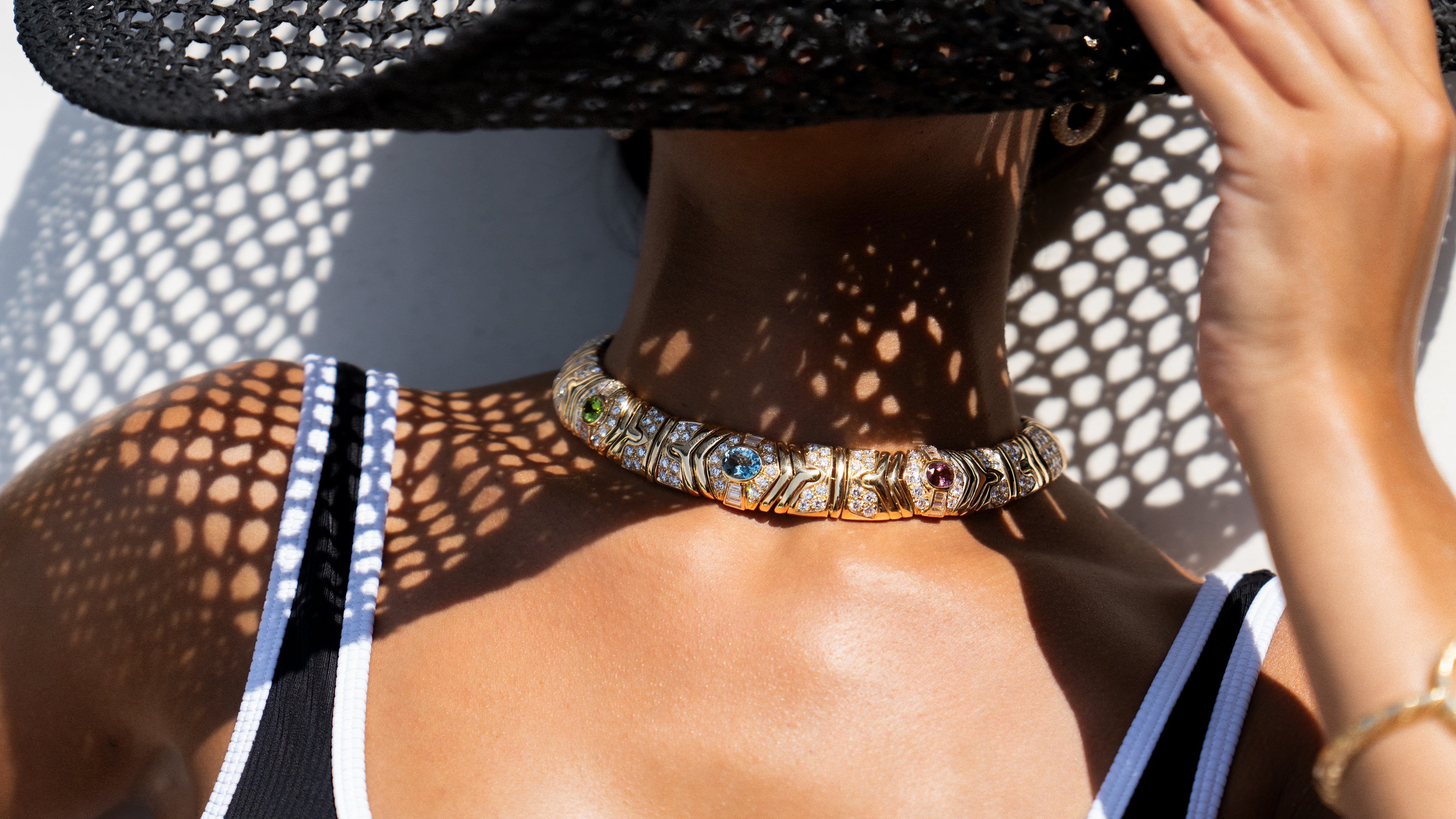Udall and Ballou
Today an air-cooled establishment houses our collection of jewelry, original in conception, new in design, modern in spirit…wrought in the Udall and Ballou tradition of fine workmanship and honest value, unchanged and unchallenged for almost fifty years. -- 1936 advertisement for Udall and Ballou.
From the Beginning
Franklin Oliver Udall, the founder of Udall and Ballou, was born in Dubuque, Iowa. He opened the first store in Jacksonville, Florida, and in 1888 established the main office on Fifth Avenue in New York City. Udall partnered in his enterprise with his brother-in-law, Herbert Ralph Ballou. Both listed their profession as silversmith. Udall and Ballou remained partners until 1907.
Udall and Ballou was the first New York jeweler to move north of 42nd Avenue on Fifth Avenue. The company grew to become one of the most prestigious jewelers during its heyday, opening branches in Palm Beach and Newport, Rhode Island, as well as on the rue Lafayette in Paris.
Dawn of the 20th Century
Coming of age in the Belle Époque period -- a time of optimism and affluence before World War I -- Udall and Ballou was perfectly poised to establish itself as the 20th Century dawned. During this time, the jeweler earned praise for its playfully tasseled seed pearl sautoirs as well as its simple and elegant diamond rings fashioned in platinum. Also part of the assortment were personal valet sets for men, as well as tea services, silver candlesticks, and other high-end home goods.
The 1920s and Beyond
With the advent of the Art Deco era, Udall and Ballou established its place as one of the country’s preeminent jewelers. As always, their craftsmanship, quality, and enduring styles assured their success. Now their talent for capitalizing on the latest trends and styles to match the changing fashion scene placed them in a position to excel. Some of the best craftsmen and manufacturers in New York supplied Udall and Ballou with what would be their most memorable and enduring pieces. Capitalizing on the “flower style” of the 1930s, William Scheer and Oscar Heyman Brothers provided Udall and Ballou with the now-famous pansy brooches and clips, featuring breathtaking gems and stunning designs.
Their advertising during this period encouraged stacking line bracelets in multiples of two, three, or more; geometric openwork double clips to adorn dresses, coats, and hats; and dangle earrings with cabochon emeralds.
Vanity cases, compacts, cigar boxes, and other accessories were also displayed for sale, alongside diamond-studded watches for ladies and elegant wrist watches for men.
Making its way into the assortment at Udall and Ballou were many whimsical pieces: A lapel watch depicting a birdhouse. A collection of brooches featuring top-hatted, bejeweled birds. Platinum and diamond-encrusted Scottie dogs accented in onyx and black enamel. Canine match safes. A series of airplane brooches awash in sparkling round diamonds. Each piece exquisitely crafted with the finest materials.
A 1928 Vanity Fair article suggested a holiday gift from Udall and Ballou -- a sterling silver cigarette case with rosewood ends ($85) or reversible dress cufflinks with diamonds on one side and black onyx on the other ($675).
New York World’s Fair, 1939
The House of Jewels dramatically presents jewelry and diamonds at the New York World’s Fair, and incredible indeed is the concentration of value and beauty. Artisans have worked for months to design and create the jewelry displayed – jewels both beautiful in execution and authentic in fashion. Pearls, Diamonds, Emeralds, Rubies, Sapphires, and precious stones of every variety are on view in the jewelers’ windows. – Brochure for the 1939 New York World’s Fair
Udall and Ballou was one of only five New York jewelers who received an invitation to display their designs at the New York World’s Fair in 1939. They shared the exhibit with four other prestigious New York jewelers of the time – Tiffany & Co., Black, Starr & Frost, Cartier, and Marcus & Company. At the heart of Udall & Ballou’s display was a stunning pendant. Wide-set strap bracelets, double clip brooches, and rings completed the array of styles that were featured.
The Final Years
By the 1940s, Udall and Ballou jewelry designs were crafted in yellow gold and included large semi-precious gemstones such as aquamarine and topaz. During the decade, Udall and Ballou experienced a decline in sales, as did several other jewelers during this decade. Their last day of business was December 24, 1949.
Udall and Ballou jewels are still prized today for their quality and beauty, and their value continues to increase. Their timeless designs are as wearable today as they were at the time of their creation.
